- Home›
- Healthy Living›
- 7 Remedies From Grandma To Get Relief From Ear Pain
7 Remedies From Grandma To Get Relief From Ear Pain
By: Priyanka Maheshwari Fri, 11 Aug 2023 2:38:41

Ear pain, medically known as otalgia, is a common and often uncomfortable sensation that can affect people of all ages. The ear is a complex structure responsible for both hearing and maintaining balance, and when discomfort or pain arises within this intricate system, it can significantly impact an individual's well-being. Ear pain can vary in intensity, from a mild, dull ache to sharp, stabbing sensations. It may be caused by various factors, including infections, injury, earwax buildup, inflammation, or underlying health conditions.
Understanding the causes, symptoms, and appropriate treatments for ear pain is crucial for addressing this discomfort and ensuring optimal ear health. Whether fleeting or persistent, ear pain prompts individuals to seek relief and proper care to restore comfort and maintain their auditory and overall health.
Ear pain can be caused by various factors, ranging from relatively minor issues to more serious underlying conditions. Here are some of the major causes of ear pain:
- Ear Infections:
Otitis Media: Middle ear infections, particularly in children, can cause significant ear pain. Fluid buildup and inflammation in the middle ear can lead to pressure and discomfort.
Otitis Externa (Swimmer's Ear): Infections of the outer ear canal, often caused by moisture or bacterial growth, can result in ear pain, itching, and redness.
- Earwax Buildup:
Excessive earwax accumulation can cause discomfort and even ear pain by blocking the ear canal or putting pressure on the eardrum.
- Sinus Infections:
Sinus infections can cause referred pain to the ears due to the close proximity of the ear and sinus cavities.
- Temporomandibular Joint (TMJ) Disorder:
Dysfunction of the TMJ, the joint connecting the jaw to the skull, can lead to pain in the jaw, face, and ears.
- Foreign Objects:
Insertion of foreign objects into the ear canal, especially in children, can cause irritation and pain.
- Eustachian Tube Dysfunction:
Problems with the Eustachian tubes, which help equalize pressure in the middle ear, can lead to ear pain, pressure, and muffled hearing.
- Dental Issues:
Dental problems, such as tooth infections or impacted wisdom teeth, can cause referred pain to the ears.
- Injuries:
Trauma or injuries to the ear or head can result in ear pain.
- Barotrauma:
Sudden changes in air pressure, such as during airplane travel or scuba diving, can lead to pain in the ears.
- Tinnitus:
While not necessarily painful, tinnitus (ringing or buzzing in the ears) can be distressing and impact an individual's quality of life.
- Mastoiditis:
Infection of the mastoid bone, located behind the ear, can cause severe ear pain and swelling.
- Teething:
Infants and toddlers who are teething may experience ear pain due to the proximity of the ear nerves to the gums.
- Medical Conditions:
Certain medical conditions like Bell's palsy, ear canal cysts, or autoimmune disorders can cause ear pain.
- Neuralgia:
Conditions like trigeminal neuralgia can cause shooting or electric-like pain in and around the ear.
- Throat Infections:
Throat infections, such as tonsillitis or pharyngitis, can cause referred pain to the ears.
Natural Remedies For Ear Pain
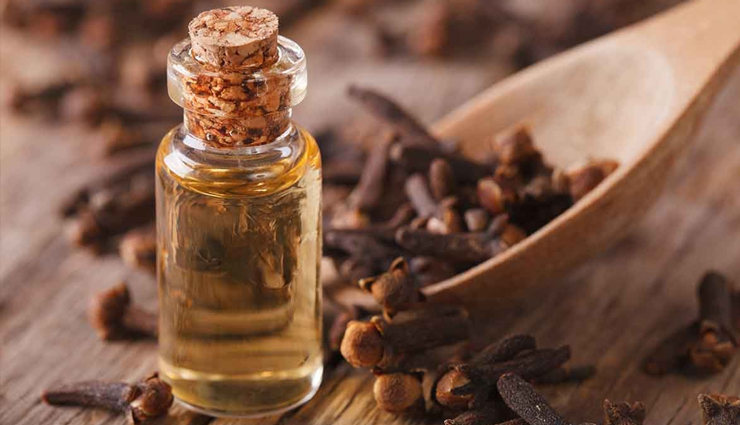
# Clove Oil
Clove oil is a natural remedy that has been used for its potential analgesic and antibacterial properties. It's sometimes considered for relieving ear pain caused by various factors, including ear infections. However, using clove oil for ear pain requires caution and proper application to ensure safety and effectiveness.
Ingredients:
Clove oil
Carrier oil (such as olive oil or coconut oil)
Instructions:
- Choose High-Quality Clove Oil:
Select a high-quality, pure clove oil from a reputable source. Make sure it is 100% pure and free from additives.
- Dilute the Clove Oil:
Clove oil is strong and can be harsh on the skin and mucous membranes. To dilute it, mix a few drops of clove oil with a carrier oil. The carrier oil helps reduce the potency of the clove oil and prevents potential irritation.
- Perform a Patch Test:
Before using the diluted clove oil in the ear, it's a good idea to perform a patch test on a small area of skin, such as the inner forearm. This helps you check for any allergic reactions or irritation.
- Warm the Oil:
Gently warm the diluted clove oil mixture by placing the container in warm water for a few minutes. This can make the oil more comfortable when it comes into contact with the ear.
- Apply a Small Amount:
Using a clean dropper or a cotton ball, apply a small amount of the warmed, diluted clove oil mixture to the entrance of the affected ear canal. Do not insert anything deep into the ear canal. The cotton ball can be placed just inside the outer ear, not inside the ear canal.
- Leave It In Place:
Let the cotton ball with the diluted clove oil mixture stay in place for a short period, ideally around 20-30 minutes.
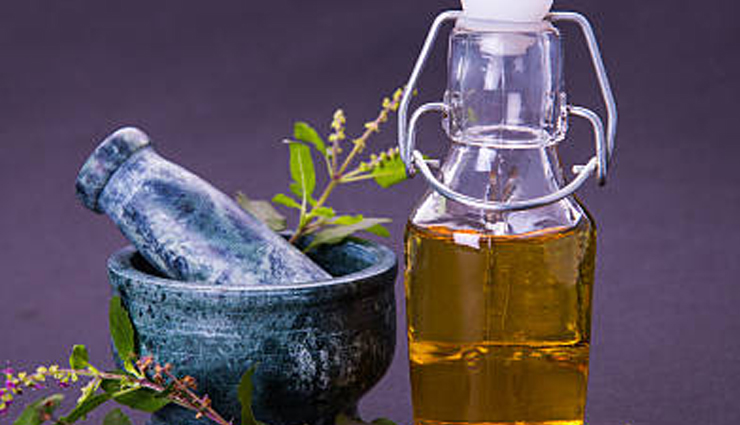
# Tulsi Oil
Tulsi oil, derived from the leaves of the Holy Basil plant (Ocimum sanctum), is known for its various medicinal properties, including its potential antibacterial and anti-inflammatory effects. Some people consider using tulsi oil for ear infections as a natural remedy. However, as with any home remedy, caution and proper usage are essential. Here's how you might use tulsi oil for ear infection:
Ingredients:
Tulsi oil (pure and high-quality)
Carrier oil (such as olive oil or coconut oil)
Instructions:
- Choose Quality Tulsi Oil:
Ensure that you have pure and high-quality tulsi oil from a reliable source. It should be free from additives or contaminants.
- Dilute the Tulsi Oil:
Tulsi oil can be strong and potentially irritating to the skin and ear canal. Dilute a few drops of tulsi oil with a carrier oil to reduce its potency and prevent any discomfort.
- Warm the Oil:
Gently warm the diluted tulsi oil mixture by placing the container in warm water for a short period. This can make the oil more comfortable when it comes into contact with the ear.
- Apply a Small Amount:
Using a clean dropper or a cotton ball, apply a small amount of the warmed, diluted tulsi oil mixture to the entrance of the affected ear canal. Do not insert anything deep into the ear canal. The cotton ball can be placed just inside the outer ear, not inside the ear canal.
- Leave It In Place:
Allow the cotton ball with the diluted tulsi oil mixture to remain in place for a brief period, around 20-30 minutes.
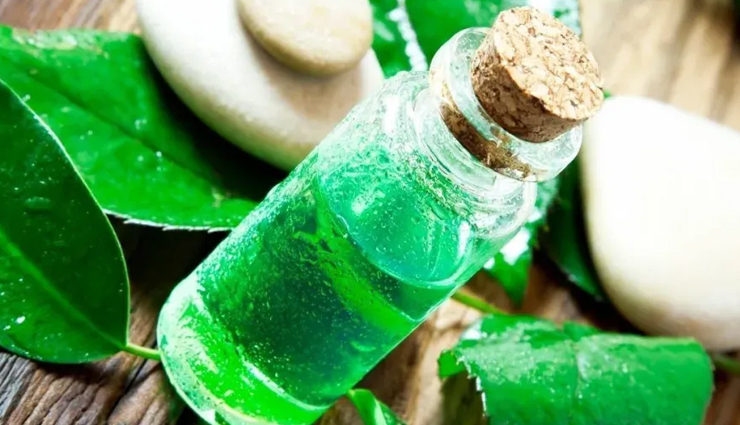
# Tea Tree Oil
Tea tree oil is an essential oil known for its antimicrobial and anti-inflammatory properties. Some people consider using tea tree oil for ear infections as a natural remedy. However, using essential oils in the ear requires extreme caution and proper application to ensure safety and effectiveness. Here's a guide on how to potentially use tea tree oil for ear infections:
Ingredients:
Tea tree oil (pure and high-quality)
Carrier oil (such as olive oil or coconut oil)
Instructions:
- Choose Quality Tea Tree Oil:
Ensure you have pure, high-quality tea tree oil from a reputable source. The oil should be free from additives, contaminants, and diluted properly.
- Dilute the Tea Tree Oil:
Essential oils are potent and can be harsh on the skin and sensitive areas. Dilute a few drops of tea tree oil with a carrier oil to reduce its strength and potential for irritation.
- Perform a Patch Test:
Before using the diluted tea tree oil in the ear, perform a patch test on a small area of skin, such as the inner forearm. This helps you check for any allergic reactions or irritation.
- Warm the Oil:
Gently warm the diluted tea tree oil mixture by placing the container in warm water for a few minutes. This can make the oil more comfortable when it comes into contact with the ear.
- Apply a Small Amount:
Using a clean dropper or a cotton ball, apply a small amount of the warmed, diluted tea tree oil mixture to the entrance of the affected ear canal. Do not insert anything deep into the ear canal. The cotton ball can be placed just inside the outer ear, not inside the ear canal.
- Leave It In Place:
Allow the cotton ball with the diluted tea tree oil mixture to remain in place for a short period, around 20-30 minutes.
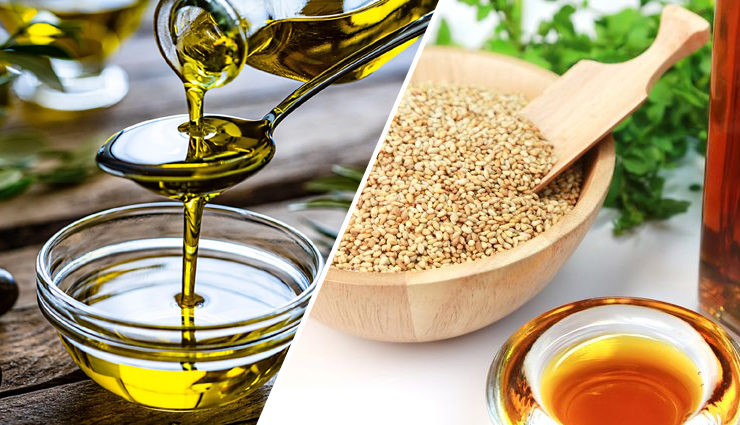
# Olive Oil Or Sesame Oil
Both olive oil and sesame oil have been used as home remedies for ear pain, particularly for issues like earwax buildup and mild discomfort. However, it's important to note that these oils should be used with caution and only for specific purposes. Here's a comparison of olive oil and sesame oil for ear pain:
Olive Oil:
- Properties: Olive oil is rich in antioxidants and has anti-inflammatory properties. It is a common household oil used for cooking and various home remedies.
- Usage: Olive oil can be used to soften and help remove excess earwax that might be causing discomfort or mild pain.
- Application: Warm the olive oil slightly and use a dropper to put a few drops into the ear canal. Lie on your side for a few minutes to allow the oil to penetrate. Then, drain the oil by tilting your head and letting it flow out.
Sesame Oil:
- Properties: Sesame oil is used in traditional Ayurvedic medicine and has been considered for its potential anti-inflammatory and antimicrobial effects.
- Usage: Like olive oil, sesame oil can also be used to soften earwax and alleviate mild discomfort.
- Application: Warm the sesame oil gently and use a dropper to instill a few drops into the ear canal. Follow the same procedure as with olive oil.
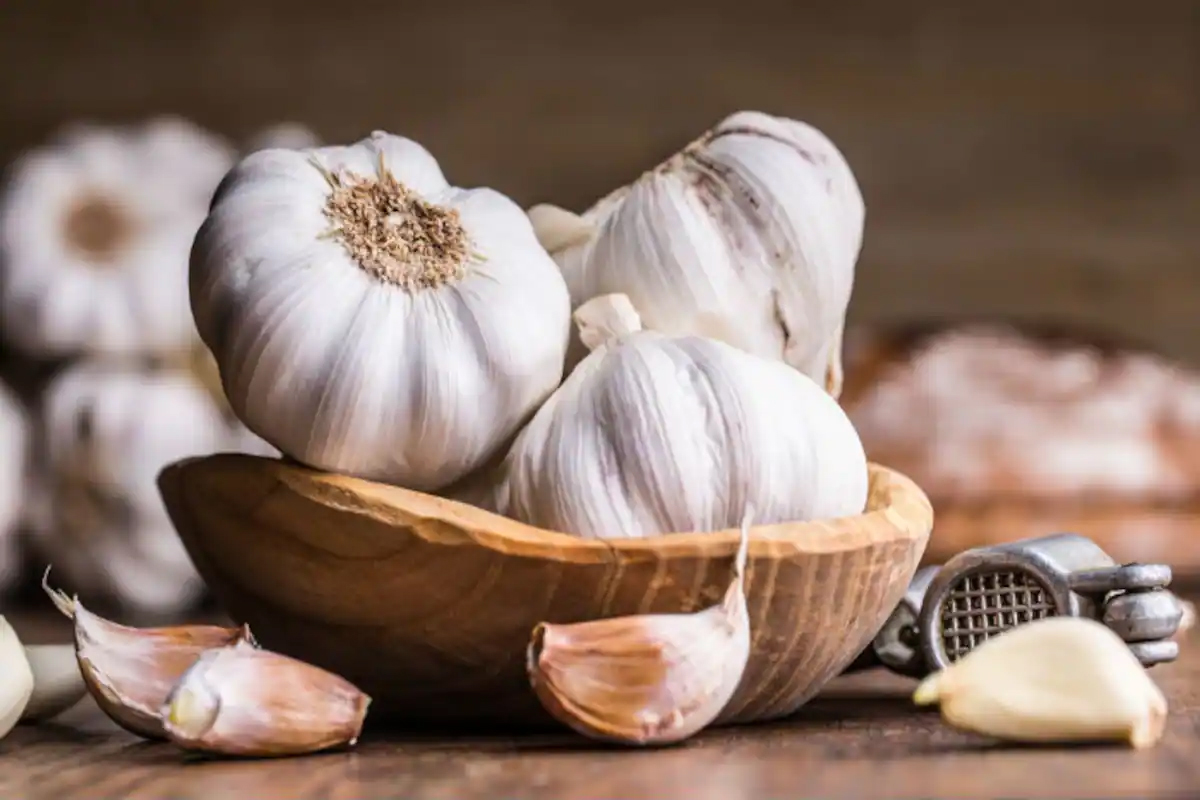
# Garlic
Garlic has been used for centuries for its potential medicinal properties, including its antimicrobial and anti-inflammatory effects. Some people consider using garlic for ear pain, particularly for mild discomfort and potential ear infections. However, using garlic in the ear requires caution and proper application to ensure safety and effectiveness. Here's how you might use garlic for ear pain:
Ingredients:
Fresh garlic clove
Carrier oil (such as olive oil or coconut oil)
Instructions:
- Choose Fresh Garlic:
Use a fresh garlic clove from a reliable source. Garlic contains allicin, a compound with potential antimicrobial properties.
- Prepare Garlic Oil:
Crush or mince the garlic clove. Mix it with a carrier oil, such as olive oil or coconut oil. Allow the mixture to sit for a while to allow the garlic's compounds to infuse into the carrier oil.
- Strain the Oil:
Strain the oil to remove any solid garlic particles, ensuring a smoother application.
- Warm the Oil:
Gently warm the garlic-infused oil mixture by placing the container in warm water for a few minutes. This can make the oil more comfortable when it comes into contact with the ear.
- Apply a Small Amount:
Using a clean dropper or a cotton ball, apply a small amount of the warmed garlic-infused oil to the entrance of the affected ear canal. Do not insert anything deep into the ear canal. The cotton ball can be placed just inside the outer ear, not inside the ear canal.
- Leave It In Place:
Allow the cotton ball with the garlic-infused oil to remain in place for a short period, around 20-30 minutes.
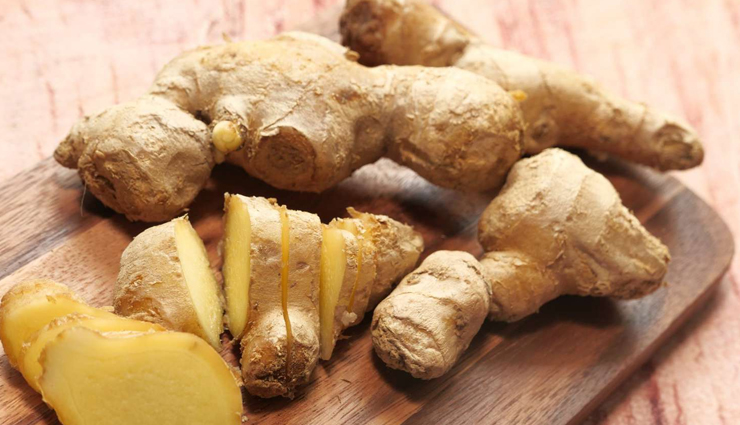
# Ginger
Ginger is a popular spice known for its potential anti-inflammatory and analgesic properties. Some people consider using ginger for ear pain, particularly for mild discomfort and potential ear infections. However, using ginger for ear pain requires caution and proper application to ensure safety and effectiveness. Here's how you might use ginger for ear pain:
Ingredients:
Fresh ginger root
Carrier oil (such as olive oil or coconut oil)
Instructions:
- Choose Fresh Ginger:
Use fresh ginger root from a reliable source. Ginger contains compounds like gingerol, which are believed to have potential anti-inflammatory effects.
- Prepare Ginger Oil:
Grate or mince the ginger root. Mix it with a carrier oil, such as olive oil or coconut oil. Allow the mixture to sit for a while to allow the ginger's compounds to infuse into the carrier oil.
- Strain the Oil:
Strain the oil to remove any solid ginger particles, ensuring a smoother application.
- Warm the Oil:
Gently warm the ginger-infused oil mixture by placing the container in warm water for a few minutes. This can make the oil more comfortable when it comes into contact with the ear.
- Apply a Small Amount:
Using a clean dropper or a cotton ball, apply a small amount of the warmed ginger-infused oil to the entrance of the affected ear canal. Do not insert anything deep into the ear canal. The cotton ball can be placed just inside the outer ear, not inside the ear canal.
- Leave It In Place:
Allow the cotton ball with the ginger-infused oil to remain in place for a short period, around 20-30 minutes.
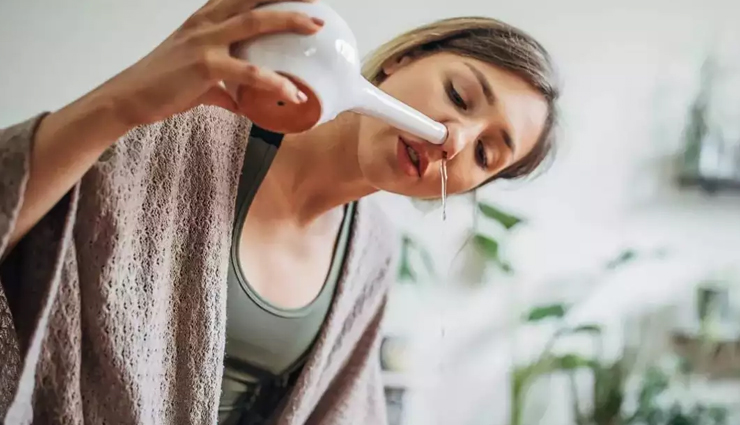
# Jal Neti
Jal Neti is a traditional nasal cleansing technique in yoga and Ayurveda that involves using a saline solution to cleanse the nasal passages. It is not directly used for treating ear pain, but it can have potential benefits for overall sinus and respiratory health, which might indirectly alleviate some forms of ear discomfort. However, it's important to understand the limitations and considerations before attempting Jal Neti for any purpose.
Here's how Jal Neti is performed:
Ingredients and Tools:
Warm, purified water
Non-iodized salt (usually a pinch)
Neti pot or similar device (designed for nasal irrigation)
Instructions:
- Prepare the Saline Solution:
- Mix a pinch of non-iodized salt into warm, purified water. The solution should be slightly warmer than body temperature and should taste similar to tears.
- Positioning:
Stand over a sink and tilt your head to the side. Keep your mouth open and slightly forward to allow for smooth breathing.
- Using the Neti Pot:
Insert the spout of the neti pot into the upper nostril. Gently pour the saline solution into the nostril. The solution should flow through the nasal passages and come out of the other nostril. Breathe gently through the mouth during this process.
- Switch Nostrils:
After finishing one nostril, switch sides and repeat the process for the other nostril.
- After Jal Neti:
Gently blow your nose to clear any remaining solution from the nasal passages. Some people also find it helpful to do a few rounds of deep breathing through the nostrils to reestablish normal airflow.





